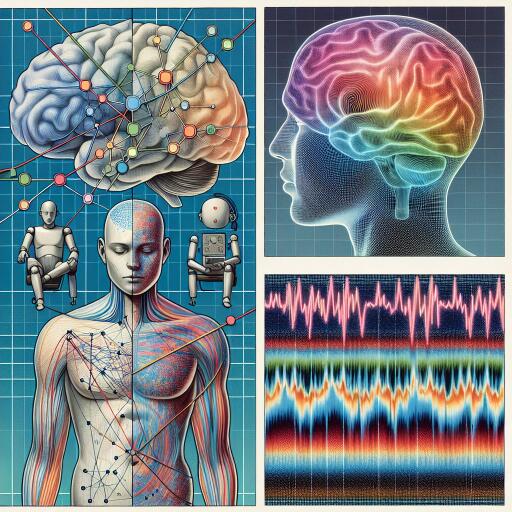Revolutionizing Perceived Urgency Evaluation through Deep Learning and Upper-Body Vibration Feedback
In a groundbreaking study, researchers have employed deep learning techniques to analyze and interpret the urgency levels perceived from vibration feedback on the upper body, as recorded through electroencephalogram (EEG) data. This novel approach combines a 2D convolutional neural network with a temporal convolutional network, capturing both spatial and temporal aspects of brain activity to assess perceived urgency more accurately than ever before.
The focus of this study involved 31 participants who underwent experiments designed to stimulate varying levels of urgency through vibrotactile feedback using a state-of-the-art haptic vest. This method was meticulously chosen to ensure inclusivity, with participants spanning a wide age range, possessing normal or corrected-to-normal vision, and free from neurological disorders or upper body pain, adhering strictly to ethical standards set forth by the New York University Abu Dhabi Institutional Review Board.
The core of the experimental setup involved the TactSuitX40, a haptic vest from bHaptics, designed to deliver stimulation patterns directly to the participants’ upper body. The vest, alongside sophisticated EEG recording equipment from Brain Products GmbH, captured the participants’ neurological responses to three distinct levels of urgency: no vibration pattern (NVP), urgent vibration pattern (UVP), and very urgent vibration pattern (VUVP).
Efforts were made to automate the process of analyzing EEG data, with minimal preprocessing to reflect the real-world application of this technology in brain-computer interfaces (BCI) and online evaluation platforms. The data underwent filtering, baseline correction, and downsampling, preparing it for the deep learning model’s analysis, which was aimed to be both robust and interpretable.
The deep learning model introduced in this study demonstrates superior performance in classifying the perceived levels of urgency from EEG data, outshining several benchmark models. It leverages the capabilities of convolutional neural networks for spatial feature extraction and temporal convolutional networks for capturing time-dependent aspects of EEG data, offering a comprehensive understanding of the brain’s response to vibrotactile stimulation.
To further solidify the reliability and interpretability of the model, Shapley values were used. This method, rooted in cooperative game theory, assigns value to each feature based on their contribution to the outcome, providing invaluable insights into the most critical features for urgency perception. Following this, a thorough statistical neural analysis was conducted, validating the features identified by the explainability analysis and ensuring the model’s findings were well-grounded.
This work not only advances our understanding of how the brain perceives urgency through vibrotactile feedback but also sets a new standard for the application of deep learning in decoding complex patterns of brain activity. By meticulously validating the model’s performance and the significance of its findings, the researchers bridge the gap between theoretical deep learning applications and practical, real-world usability, opening new avenues for BCI technologies and beyond.
The findings of this study, published in Scientific Reports, promise to revolutionize how we approach and interpret EEG data, paving the way for innovative applications in emergency notification systems, assistive technologies for the visually impaired, and immersive experiences in gaming and virtual reality.










